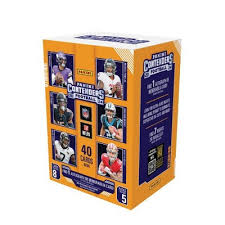

Changes are coming to the biggest sports card grading company. PSA has declared that it will no longer use the declared value requirement.
This changes one of the most confusing elements in the process of submitting your cards. However, many of us need more understanding of how the declared value requirement process works.
Is this change an important one? How will this influence your submissions? Does it benefit you or hurt you financially and in terms of the ease of the submission process? We have the full story in our overview of how PSA eliminated the declared value requirement.
A few days ago, rumors about a potential change in the PSA-declared value requirement began to bubble up. Users on the PSA website were forced to insure their cards to the highest amount in the service level.
As always, the folks at Blowout Forums were the first to notice. One user wrote, “Well, the only upside to this if they use this method, is if they damage the card during grading/sealing and you get the top DV return value back, I would be all for it. I am sure it’s just a glitch, however. I had some issues with the PSA site this week, so I am sure that’s all it is.”
But it was no glitch. This was a new policy that was only announced the next day.
Then, on November 15th, the news was confirmed—curiously enough, not on any of PSA’s official channels but rather on Geoff Wilson’s Sports Card Investor Instagram account.
This is another example of how influential Wilson has become in the hobby. That has not always been a good thing, but that is a different story.
The announcement read: “You no longer need to enter a declared value for each item you submit to the Online Submission Center. Every item is automatically insured up to the maximum value allowed for the selected service level.
For example, suppose you submit cards under the Value service level, which allows for cards up to $500. In that case, every item you add to the order will be automatically insured for up to $500 depending on market value.”
The move has had a mixed reception, with some welcoming it as overdue. That is because it will affect different types of customers in differing ways. But let’s start at the beginning. What is the declared value requirement?
When you submitted a card to PSA (until now), you had to write down what you believed was the card’s estimated value after the grading process. PSA is “the dollar amount you estimate an item will be worth after PSA authentication and grading.”
That wasn’t easy because you did not know in advance what grade the card would get. Sometimes, a PSA 10 is worth several times more than a PSA 9.
But a PSA video on the topic explains, “We know that your item hasn’t been graded yet. However, there is a good chance that increasing its value is what brought you here. So, it’s essential to estimate
Despite the uncertainty, setting a value and making it as close to accurate as possible was important. That is because the declared value would help to:
The value you declared would determine how much your card was covered from potential damages. The dollar amount you declared also served as the maximum amount you could claim if the card is damaged or lost.
Therefore, PSA wanted you to look carefully at the condition of the card you sent and determine what grade it would receive. Then, compare it to the most recent comparable sales.
PSA promised that the declared value would only be used for insurance companies. They claimed it would not:
However, if PSA considered the cards undervalued to the point where they should have been bumped up to a new service level, they would do so automatically and charge the customer accordingly.
Determining The Service Level
The cards’ declared value would change according to the cost of the grading service. PSA offers several service levels. The higher the level of service, the quicker the service.
However, the high levels of service also require more insurance coverage. With this in mind, you had to select your service level by the declared value as estimated for its worth after the grading.
The most obvious outcome here is that you will pay more for shipping on your orders. That is the downside. The upside is that if anything happens to your card, you could be reimbursed far more than otherwise.
Since most of us do not get that many cards damaged or lost, we mainly submit cards and get them back, which will not benefit customers most of the time.
Some customers also complain that this removes much of the submitter’s choice over the costs they pay and how they submit their cards generally. One Blowout Forums user predicted that the limitations would not end there.
“What it comes down to is they don’t want users having any control of the process. It wouldn’t surprise me if, down the line, they change the submission process to where you don’t even have control over which service you get. You submit the cards, and they decide what service it falls under. You could have a 20-card order that you believe is Value Bulk, and they may decide that 2 of your cards are Value Plus, and based on their new T&S, if I’m not mistaken, you can’t question it.”
Another agreed and added, “This seems like the next likely step. As things become more automated, declared values, upcharges, and service levels will all be automatically calculated by the scan/identify software. They will advertise that this will be easier for the customer, which it will be, but it will be at the cost of higher prices, of course.
Having the customer trust PSA with the cards’ values still screams a conflict of interest. Disputes will be like trying to get money when dealing with an insurance company.”
When we heard this news, the first thing collectors hoped for was that if PSA sets the maximum, they would not bump your cards up a service level. Unfortunately, that is not the case.
If PSA determines that your card is worth more than the service level you requested allowed, they will still bump it up. Now, the card will be ensured up to the maximum service level.
That means the main benefit that could have served those of us who submit to PSA is not applicable. This was disappointing news to those who hoped to enjoy an end to annoying and expensive upcharges.
The declared value requirement was undoubtedly one of the most confusing parts of submitting cards to PSA. It called for us to make value judgments on cards that needed to be graded. It also created opposing incentives.
On the one hand, we wanted to make the estimate low so we wouldn’t have to pay for a higher service level. On the other, we didn’t want to get royally screwed if our cards were lost or damaged.
Therefore, no matter what value you put down, you would feel vaguely uneasy and dissatisfied. This move removes that element from our calculations. That is a good thing.
Theoretically, we are also getting a higher level of insurance on the card. But honestly, I don’t believe it.
Do you think that if they damaged your card worth $18,000, the insurance will treat it as a $24,000 card because of this PSA policy? I don’t. These policies are designed to protect PSA and the insurance company, not the run-of-the-mill collector.
That means the new policy will save you some hassle but will likely bump up the cost of your submissions without offering you any upside.
It isn’t a huge deal, but just another example of how the big companies in the hobby like to nickel and dime us regularly. Then they tell us it’s all for our convenience. Welcome to corporate America.
2025 Topps All Star Game Mega Box Product Review
Ripping the new Topps All Star Game mega box.
Is this new sports card store the BEST VALUE around?
I Tested eBay Auction Promotions So You Don’t Have To!
I deep-dove on Fanatics Collect so you don't have to (but should you?)
Panini is launching a WNBA Product at $30,000!?
Topps Chrome 2024-25 Basketball: Honest Review and Notes
Did you know this SECRET about PSA slabs? #sportscard #tcg






2022 Topps Heritage Baseball Blaster Box Configuration: 7 Packs per Box – 9 Cards per Box. Plus 1 extra pack.










Keep up on breaking Sports Card News, our latest articles, product specials and exclusive content with expert analysis of hobby trends.

© Copyright 2025 - All rights reserved Cardlines.com / Media Techs LLC - Sports Card News, Reviews, Releases and BREAKS - #thehobby.
Important: When you click on links to various merchants on this site and make a purchase, this can result in this site earning a commission. Affiliate programs and affiliations include, but are not limited to, the eBay Partner Network.
The Ultimate 2024 Football Card Brand Tier List (Panini vs. Topps and more!)
Cardlines 8 hours ago